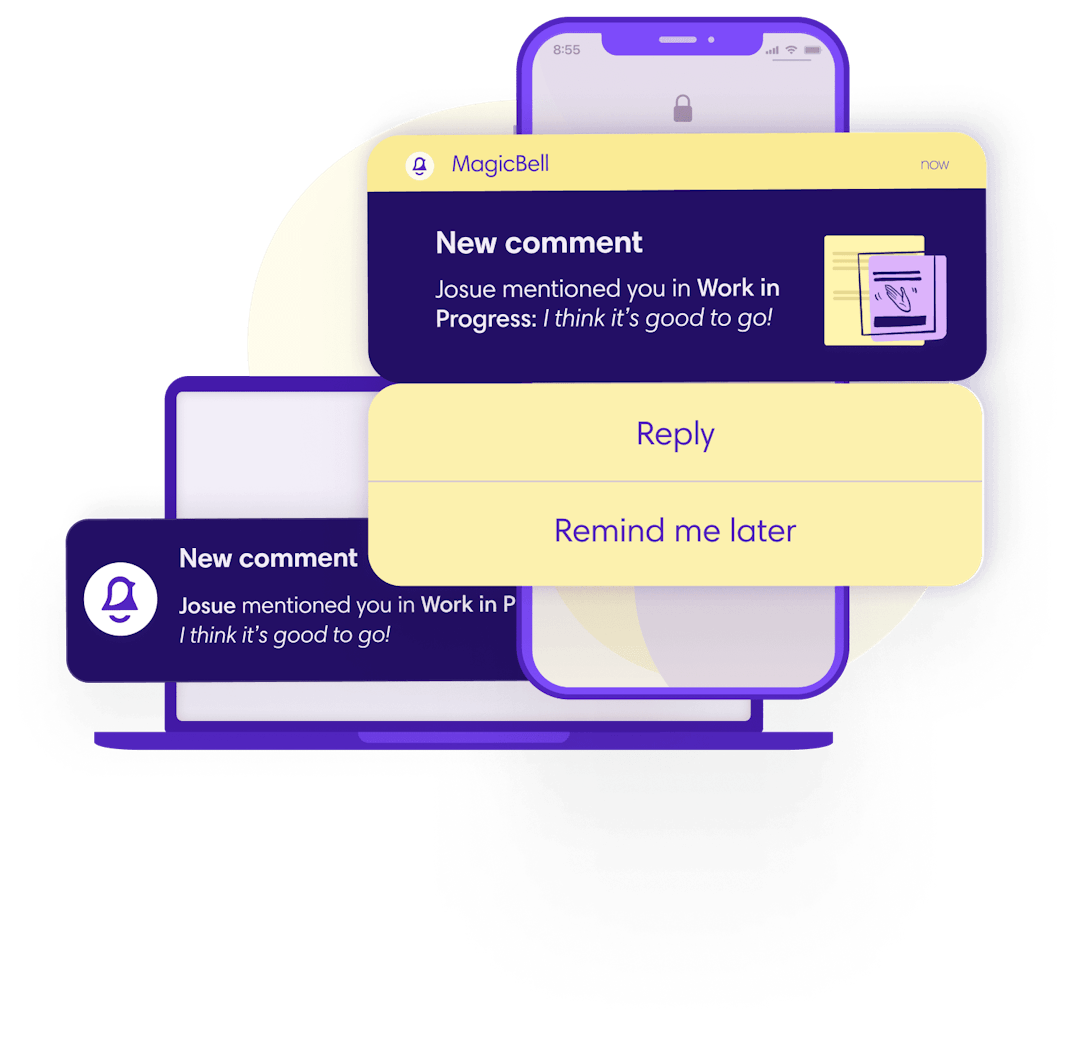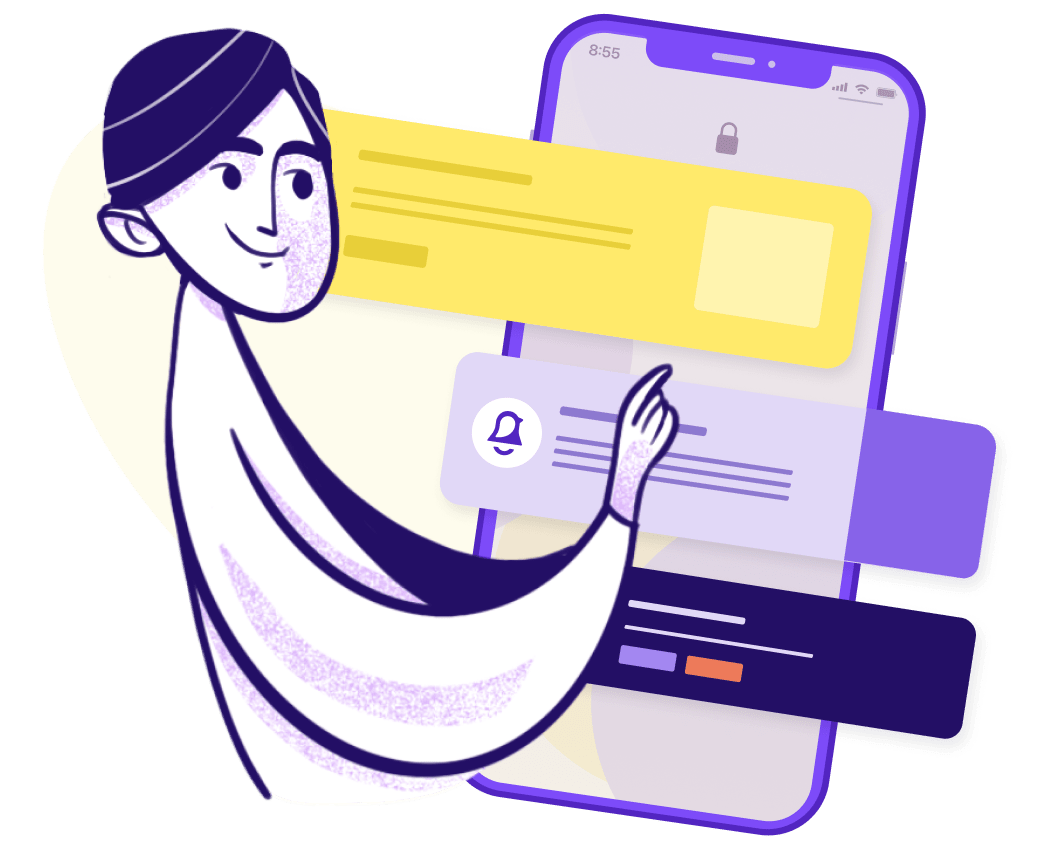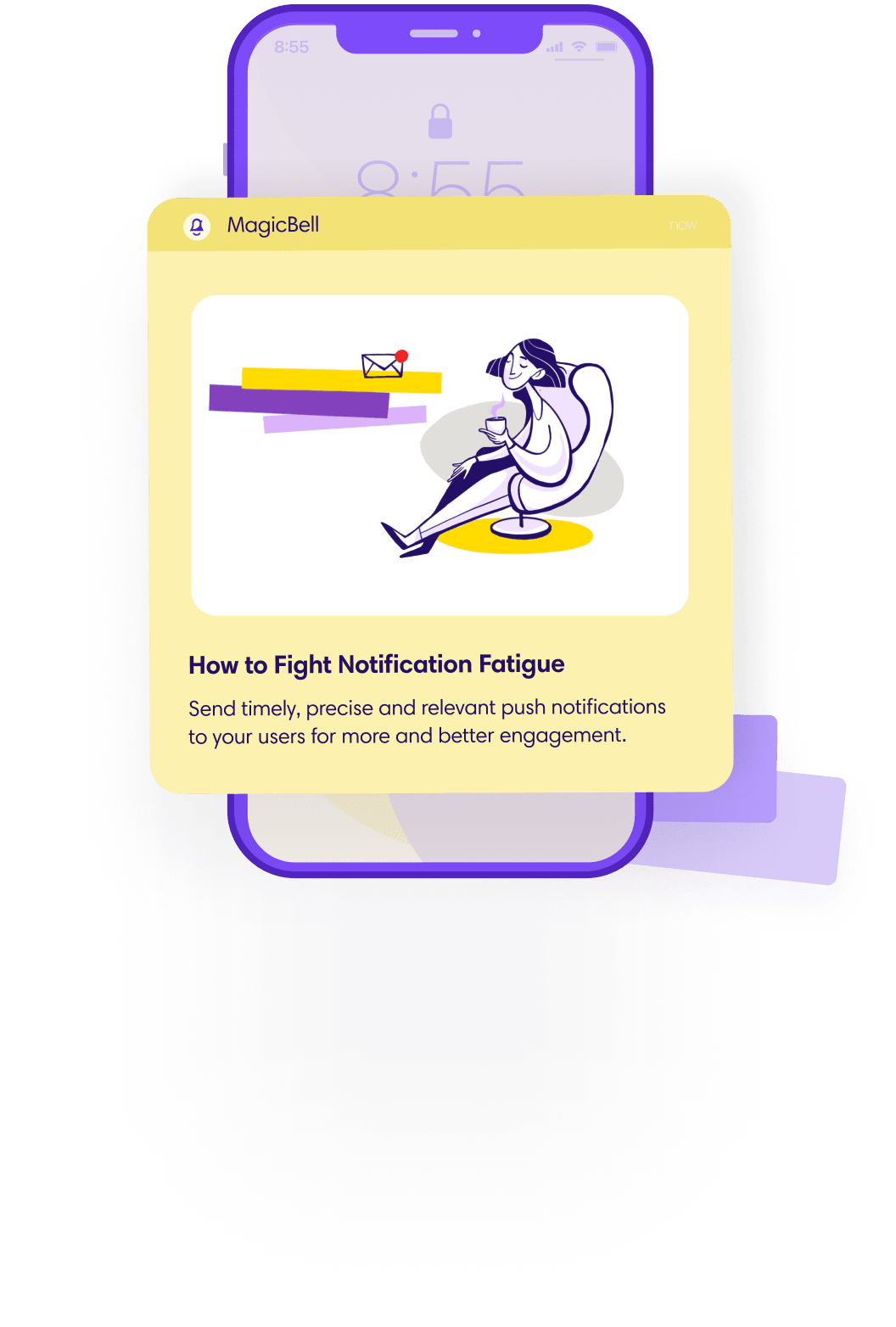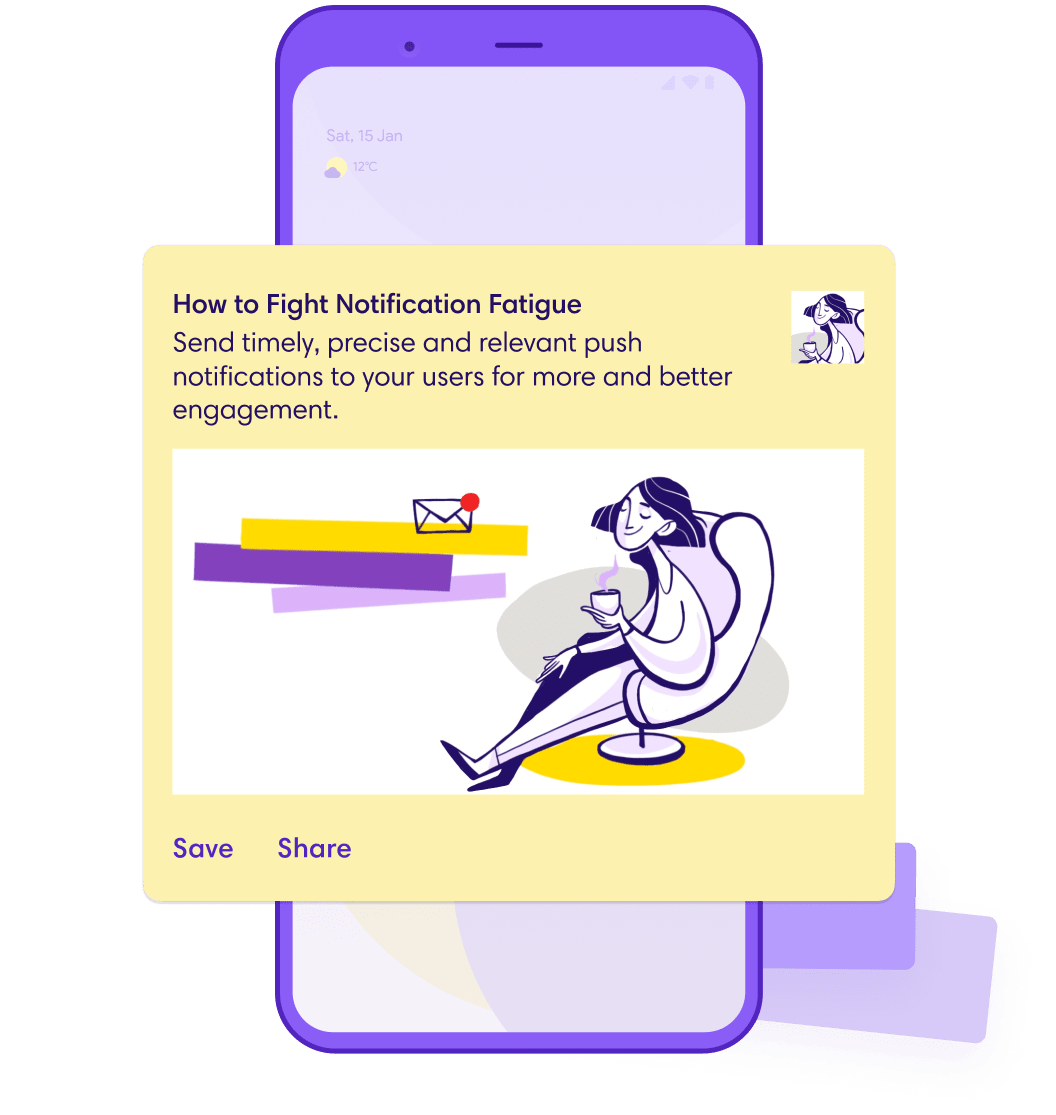
Cross-Platform Mobile Push Notifications
MagicBell's simple API & SDKs enable you to offer Android & iOS push notifications and an in-app notification inbox. All within the hour!
Mobile Push - What is it?

Mobile push notifications are the most frequently used type of notifications displayed on the user's lock screen that inform them about relevant and timely updates from your app.
Web push or browser push notifications are usually implemented together with mobile push to provide an ultimate multi-channel experience for users.
Explore Web Push
With mobile push notifications being so popular, it might be easy to put them in the same basket as mobile WEB push notifications.
While both serve more or less the same purpose and look similar, mobile web push notifications can be delivered to users even if they don't have your app installed and only on Android mobile devices.
That leads to mobile push notifications to be also known as native or in-app push notifications. Android, iOS, Windows - every mobile platform offers its services to send mobile push notifications.
Go to Docs
Mobile Push Notifications on iOS and Android

Mobile Push Notifications on iOS
To deliver push notifications from your iOS app you need to register a new auth key for the Apple Push Notification service (APNs).
MagicBell will use P8 tokens to authenticate requests made to the APNs.
Mobile Push on iOS
Mobile Push Notifications on Android
To deliver push notifications from your Android app, you must create a Firebase project and set your Firebase credentials for MagicBell.
Simply log in to your Firebase account, pick your project and open the settings page of that project.
If you don't have a project yet, create one. Then open the Cloud Messaging settings tab, and copy the server key and sender ID.
Mobile Push on Android
Add Mobile Push to Your Notification Stack
How to Create Effective Mobile Push Notifications?
Send Relevant Notifications
Users expect the content delivered through web push to be helpful. The notification permission should not be viewed as a license to send loads of garbage to the user.
Leverage Data Analytics
Analytics is an unavoidable part of operating successful applications. Leveraging insights from analytics also enables you to improve the effectiveness of your web push notifications.
Provide Value to Users
Respect the user and ensure that your notifications provide value. If the user does not receive any perceivable value from the notifications, they'll start ignoring them even if they haven't revoked their consent.
Send Personalized Notifications
Users will always prefer apps that personalize communication, resulting in more consistent usage. Personalization can be done programmatically to reduce the overhead for developers.
The more apps a user has installed, the harder it becomes to focus on each of them. iOS and Android push notifications can help pull users back into an app, helping them complete high-value tasks that require actions.
Implement Mobile Push Notifications in React Native

Mobile Push Notifications: React Native + FCM
React Native is a library maintained by Facebook that can be used to build front-end applications across different platforms.
Firebase is a backend-as-a-service solution from Google. These tools can be combined to build a cross-platform application.
Below, you can learn how to integrate mobile push notifications in React applications using FCM.
Mobile Push Notifications in React
More About Mobile Push Notifications
Take a deep dive to understand how mobile push notifications work.
Web Push + Mobile Push
Build a multi-channel notification experience for your users by combining web and mobile push notifications.